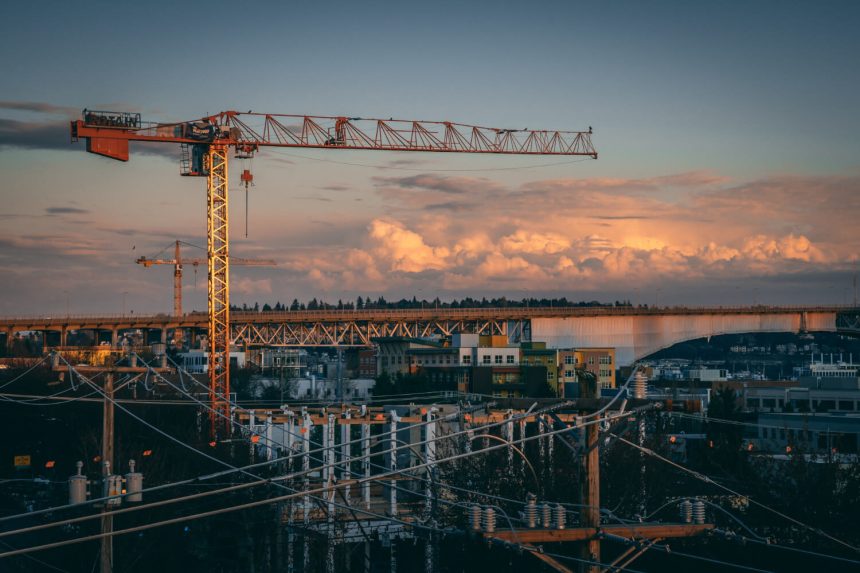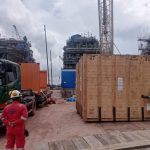Liga Asuransi – Owners, contractors and project consultants, how are you? May you, your family and your business always run smoothly. This time, we discuss project insurance claim rejection, a problem that often disappoints project owners and contractors. Imagine, insurance for construction it has been purchased, the premium has been paid, but when an accident occurs, the claim is rejected!
Why could this happen? Many factors cause claims not to be paid, ranging from inappropriate policies, errors in claims procedures, to negligence in documentation. Don’t let your project experience the same thing!
Read this article completely and share it with your colleagues, so that they also understand how to avoid insurance claim rejection. Get hundreds of other informative articles only on this blog!
Construction projects involve many risks, ranging from material damage, work accidents, to project delays. Without adequate protection, these risks can cause major financial losses for project owners and contractors. Therefore, construction project insurance becomes an important element in risk management, providing financial guarantees against unexpected events.
One of the crucial aspects of project insurance is the claims process. When an incident occurs, project owners and contractors rely on insurance to cover the costs of repairs, damages, or compensation. However, not all insurance claims are approved. Many factors determine whether a claim will be accepted, rejected, or only partially paid. Some claims are denied due to errors in documentation, late reporting, or non-compliance with policy coverage.
This article will discuss case studies of insurance claims in construction projects, including the correct claims process, common reasons claims are rejected, and valuable lessons that can be applied to avoid problems in the future. With a better understanding of insurance claims, project owners and contractors can optimize their insurance coverage and ensure projects run more safely and efficiently. 🚀
Reasons Why Insurance Claims Are Denied in Construction Projects
Although construction project insurance aims to provide protection against various risks, not all claims can be approved by insurance companies. There are many cases where insurance claims are rejected due to non-compliance with policy provisions or due to administrative errors. Therefore, project owners and contractors must understand the common reasons for claim rejection in order to avoid similar incidents in the future. The following are some of the main reasons why insurance claims in construction projects are rejected.
- The claim was rejected because the policy did not cover the risks that occurred
One of the most common reasons an insurance claim is rejected is that the event being claimed is not included in the policy coverage. Each insurance policy has a list of covered risks and exclusions. If the risk that caused the loss is not listed in the coverage, the claim will be rejected.
Example:
A high-rise building project was damaged by an earthquake. The project owner submitted an insurance claim for repair costs, but the claim was rejected because the policy only covered damage due to fire and work accidents, but did not cover natural disasters.
In another case, the contractor experienced theft of heavy equipment at the project site at night. However, the claim was rejected because the insurance policy did not cover theft that occurred outside project working hours without adequate security.
How to Avoid Rejection:
- Make sure the policy has coverage appropriate to the project risks.
- Add endorsements or policy extensions for additional risks such as natural disasters if the project is in a vulnerable area.
- Consult an insurance broker to understand the exclusion clauses in the policy.
- Claim Denied due to Insufficient Documentation
Documentation is a key element in every claim submission. If the claim is not accompanied by strong evidence, the insurance company can reject the claim or only pay a portion of the amount submitted.
Common reasons claims are denied due to lack of documentation:
- There are no official reports from the project or police if there is theft or work accident.
- Photos or videos of the damage are not available or are not clear enough to support the claim.
- There is no technical report or chronology of events explaining the cause of the loss.
- Delay in reporting incidents to insurance companies.
Example:
An infrastructure project experienced damage to the newly built bridge structure due to heavy rain. The contractor filed a claim, but had no documentation before and after the incident, making it difficult for the insurance company to assess the extent of the damage and its cause. As a result, the claim was rejected.
How to Avoid Rejection:
- Report the incident as soon as possible according to the time limit set in the police.
- Document damage with photos, videos, and written reports before making repairs.
- Make sure all reports and supporting documents are complete before submitting a claim.
- Claim Rejected Due to Contractor Management Error
Not all incidents can be claimed for insurance, especially if the damage occurs due to contractor negligence or errors in project planning. Insurance policies typically do not cover risks resulting from avoidable human error.
Examples of Contractor Management Mistakes that Cause Claims to be Rejected:
Failure to carry out work safety procedures resulting in work accidents.
Negligence in using materials that do not meet specifications, which causes structural damage before the project is completed.
Failure to comply with engineering standards and construction regulations resulting in buildings cracking or collapsing.
Example:
A road construction project experienced major cracks six months after the asphalt had been installed. The contractor filed an insurance claim, but upon investigation, it was discovered that the asphalt mix used did not comply with the specifications required in the project agreement. As a result, the claim was rejected because the error was the contractor’s responsibility, not a risk covered by the insurance policy.
How to Avoid Rejection:
- Ensure all work safety procedures and construction standards are followed.
- Use materials that meet specifications and record each material use in the project documents.
- If a technical error occurs, immediately report it to the insurance company before submitting a claim.
- Examples of Cases of Rejected Claims and Their Reasons
Case: Claim Rejected in Toll Road Project
Background:
A contractor company is working on a 50 km toll road project. After two years of construction, there was subsidence of the road surface and large cracks in several segments of the project. The contractor submitted an insurance claim for repair costs worth USD 1.5 million.
Investigation Results:
After conducting an inspection, the insurance company rejected the claim for the reasons:
- Delay in Reporting: Incidents began occurring six months earlier, but were only reported after the damage had become more severe.
- Inadequate Documentation: There are no periodic inspection reports showing the condition of the road prior to subsidence.
- Construction Engineering Errors: The results of the technical audit show that the damage occurred due to the use of materials that did not meet project specifications and not due to external factors such as natural disasters or accidents.
Lessons Learned:
- Report the claim as soon as possible, don’t wait until the damage gets worse.
- Document project progress regularly to support claims if incidents occur.
- Ensure that all technical specifications and construction methods comply with the standards required in the project.
Insurance claims in construction projects are not always approved. Many claims are rejected due to inappropriate policy coverage, incomplete documentation, or errors in project management. Therefore, it is important for project owners and contractors to understand the insurance policy provisions well, have complete documentation, and carry out the project in accordance with established safety and engineering standards.
Working with a professional insurance broker such as L&G Insurance Broker can help in choosing the right policy, ensuring claim procedures comply with standards, and avoiding obstacles in submitting claims.
Don’t let your claim be rejected! Contact L&G Insurance Brokers now for a free consultation and the best insurance solutions for your construction project! 🚀
Valuable Lessons from Insurance Claim Case Studies
Every construction project faces various risks that can cause major losses. Project insurance is the main protection tool, but many claims are rejected due to errors in policy selection, poor risk management, or lack of documentation. From various case studies of insurance claims in construction projects, there are several valuable lessons that can be taken so that contractors and project owners can avoid claim rejections and ensure their projects have optimal protection.
- The Importance of Choosing a Policy that Suits the Project Risk
One of the biggest mistakes that is often made is choosing a policy that does not correspond to the real risks facing the project. Some project owners and contractors choose insurance based solely on the lowest premium cost without understanding the coverage and exclusions in the policy. As a result, when an incident occurs, their claim is rejected because the incident is not included in insurance coverage.
Example:
A high-rise building construction project in an earthquake-prone area only has Construction All Risk (CAR) Insurance, but does not add additional coverage for natural disaster risks. When an earthquake occurs that damages the building structure, the claim is rejected because the policy does not cover earthquake risks.
Lessons Learned:
- Understand the project requirements before purchasing an insurance policy.
- Discuss with your insurance broker regarding policy coverage and exclusions.
- If the project is in a disaster-prone area or has other high risks, add appropriate endorsements or coverage extensions.
- Manage Risk Well to Make Claims Easier
Apart from choosing the right policy, risk management in the field also plays an important role in the success of insurance claims. Many claims are ultimately rejected or only partially paid because contractors do not implement good project safety and maintenance standards.
Example:
A construction project experienced a work accident because workers did not use the required Personal Protective Equipment (PPE). The insurance company denied the claim due to the contractor’s negligence in implementing safety procedures.
Lessons Learned:
- Ensure the project has an Occupational Safety and Health Management System (SMK3) that meets standards.
- Perform regular inspections to ensure safety procedures are implemented properly.
- Maintain equipment maintenance and safety training records for workers to support claims if an incident occurs.
- Accurate Documentation and Reporting
One of the main reasons claims are denied is a lack of complete and accurate documentation. When an incident occurs, insurance companies need strong evidence to assess the claim. Without sufficient documentation, claims may be denied or only partially paid.
Example:
A toll road project suffered structural damage after heavy rain. The contractor filed a claim, but had no documentation about the condition of the project before and after the incident. The claim was ultimately rejected because there was no evidence that the damage occurred due to external factors and not a construction error.
Lessons Learned:
- Always document project conditions before, during, and after an incident.
- Retain periodic inspection reports and proof of project maintenance.
- Report claims as soon as possible so that they are not considered late or expired.
- The Role of Insurance Brokers in Ensuring Successful Claims
Many contractors and project owners experience difficulties in submitting claims because they do not understand the claims procedures properly. This is where insurance brokers play an important role in helping ensure that claims are accepted and paid according to the policy coverage.
How Does an Insurance Broker Help?
- Analyze project risks and ensure the policies purchased meet your needs.
- Provide guidance on claims procedures and ensure all claim documents are prepared correctly.
- Assist in negotiations with insurance companies to speed up the claim payment process.
- Ensure that the project owner or contractor understands the policy provisions before purchasing insurance.
Example:
A construction project experiences flood damage, but the contractor is initially hesitant to file a claim because he is unsure whether the policy coverage covers water damage. Insurance brokers assist in reviewing policies, preparing claim documents, and negotiating with insurance companies. As a result, the claim amounting to USD 2 million was successfully paid.
Case studies of insurance claims in construction projects provide many valuable lessons for contractors and project owners. Choosing the right policy, managing risk well, having accurate documentation, and using the services of an insurance broker can increase the chances of a claim being approved and processed quickly.
Working with L&G Insurance Brokers ensures your project gets the right insurance coverage, accurate claims guidance, and full support in negotiations with insurance companies.
Don’t take risks with unsuitable insurance! Contact L&G Insurance Brokers now for a free consultation and get the best construction insurance solution for your project! 🚀
Conclusions and Recommendations
Insurance claims in construction projects play an important role in protecting project owners and contractors from financial risks due to unexpected incidents, such as work accidents, infrastructure damage, natural disasters, or project delays. However, many claims fail to be processed due to inappropriate policies, incomplete documentation, or errors in project risk management. Therefore, understanding the correct claims procedure and choosing a policy that suits the project risk is very crucial.
In order for claims to be accepted easily, project owners and contractors must ensure that they choose an insurance policy that covers risks that are truly relevant to their project. Additionally, adhering to workplace safety procedures, accurately documenting each incident, and reporting claims in a timely manner are important steps to avoid claim denials.
In this case, L&G Insurance Broker ready to assist project owners and contractors in obtaining optimal protection. With extensive experience and network, L&G Insurance Broker can help choose the best policy, ensure completeness of claim documents, and handle negotiations with insurance companies so that the claims process runs smoothly.
Don’t put your project at risk without proper protection! Contact L&G Insurance Brokers now for a free consultation and find the best construction insurance solution for your project! 🚀
Looking for insurance products? Don’t waste your time and contact us now
HOTLINE L&G 24 JAM: 0811-8507-773 (CALL – WHATSAPP – SMS)
Website: lngrisk.co.id
Email: oktoyar.meli@lngrisk.co.id
—








![[RECAP WEBINAR: Heavy Eqipment, Heavy Risk]
Dalam industri konstruksi dan pertambangan, alat berat bekerja di lingkungan penuh risiko. Mulai dari perpindahan antar lokasi, operasi di medan ekstrem, hingga potensi kecelakaan dan kerusakan mekanis. Tanpa perlindungan yang tepat, kerugian yang muncul bisa mencapai ratusan juta hingga miliaran rupiah.
Webinar ini membahas secara mendalam:
✅ Risiko utama yang mengancam alat berat di proyek konstruksi & tambang
✅ Jenis perlindungan penting seperti CPM (Contractor’s Plant & Machinery) dan Equipment All Risks
✅ Klausul yang sering terlewat oleh pemilik alat dan perusahaan rental
✅ Peran krusial broker asuransi dalam memastikan penutupan polis tepat dan klaim berjalan mulus
Dengan jaminan asuransi alat berat yang sesuai, operasional proyek Anda tetap aman, efisien, dan terlindungi dari kerugian besar.
📣 Nantikan webinar edukatif berikutnya dari L&G Insurance Broker untuk memperluas wawasan Anda tentang manajemen risiko di industri konstruksi dan alat berat! Follow akun kami dan aktifkan notifikasi agar tidak ketinggalan😉
#webinargratis #onlinewebinar #webinar #AsuransiAlatBerat #HeavyEquipment #CPMInsurance #MiningSafety #BrokerAsuransi #AmanBersamaLNG](https://scontent-yyz1-1.cdninstagram.com/v/t51.82787-15/583486524_18408253015184229_1382819462085136671_n.jpg?stp=dst-jpg_e35_tt6&_nc_cat=105&ccb=7-5&_nc_sid=18de74&efg=eyJlZmdfdGFnIjoiQ0FST1VTRUxfSVRFTS5iZXN0X2ltYWdlX3VybGdlbi5DMyJ9&_nc_ohc=LEFLS1E6-n4Q7kNvwGkDmyY&_nc_oc=AdnNy0zp0yC2tU0WPBFouFKVjuKRuwBFqR0UNGy6wHFxS6WpLLLJGtM4B1Fzr8Mrd17mFA0DjZunYhLtsFuHsij8&_nc_zt=23&_nc_ht=scontent-yyz1-1.cdninstagram.com&edm=ANo9K5cEAAAA&_nc_gid=oSeaLBWaR-XQBec5hvxCrg&oh=00_Afkx-0gMbHtcHjqh0tCatfkjYDi6lnE953VfIoObFA0qhQ&oe=69458CEF)
![[HADIRI WEBINAR GRATIS]
L&G Academy Online Webinar: Heavy Equipment, Heavy Risk! Wajibnya Perlindungan Asuransi Alat Berat bagi Kontraktor dan Pemilik Alat
Dalam proyek konstruksi dan pertambangan, alat berat adalah aset bernilai tinggi yang menjadi tulang punggung operasional. Namun, kerusakan, kecelakaan, atau kehilangan alat di lapangan bisa menimbulkan kerugian besar dan menghentikan pekerjaan di tengah jalan.
Banyak kontraktor dan pemilik alat baru sadar pentingnya asuransi setelah kerugian terjadi. Padahal, perlindungan yang tepat bisa menjadi penyelamat bisnis.
🎙️ Narasumber:
Mhd. Taufik Arifin
CEO & Founder L&G Insurance Brokers
Lebih dari 40 tahun pengalaman menangani asuransi alat berat, marine, dan proyek besar di Indonesia
📅 Rabu, 12 November 2025
🕙 10.00 WIB – selesai
📍 Live via Zoom
💰 GRATIS! Kuota terbatas
🔗 Registrasi di: bit.ly/3JuYYfh
📲 Daftar sekarang sebelum Anda menyesal jadi salah satu yang “baru sadar setelah rugi besar.”
📞 0811-8507-773
#webinargratis #webinaralatberat #onlinewebinar #kelaswebinargratis #mining #miningequipment #heavyequipment #alatberat #heavyequipmentinsurance #CPM](https://scontent-yyz1-1.cdninstagram.com/v/t51.82787-15/572482319_18404442202184229_2761295381299065355_n.jpg?stp=dst-jpg_e35_tt6&_nc_cat=110&ccb=7-5&_nc_sid=18de74&efg=eyJlZmdfdGFnIjoiRkVFRC5iZXN0X2ltYWdlX3VybGdlbi5DMyJ9&_nc_ohc=YBfuRTABJ5wQ7kNvwEW7q4b&_nc_oc=Adkvywr5WKX6XNcVupQZSVipyaZqfSkpP0dNa7mntKR8bncwCn3olM6crU_KE5LbWJpJpmFdBkCbEoW954Tt7cVM&_nc_zt=23&_nc_ht=scontent-yyz1-1.cdninstagram.com&edm=ANo9K5cEAAAA&_nc_gid=oSeaLBWaR-XQBec5hvxCrg&oh=00_AfmiY4iIbjZ5sEt0hfrf_22YP5cfD6B2RXuaavJfW9Hw9g&oe=694586FF)

![[RECAP WEBINAR: Strategi Asuransi yang Tepat untuk Melindungi Risiko Proyek PLTS]
Proyek PLTS, baik Rooftop maupun Floating Solar Farm, menyimpan risiko unik mulai dari gangguan instalasi, cuaca ekstrem, hingga keterlambatan operasional yang bisa menimbulkan kerugian besar.
Webinar kami membahas strategi asuransi yang tepat untuk melindungi proyek Anda dari risiko-risiko ini, termasuk:
✅ Jenis risiko yang harus diperhatikan
✅ Pilihan proteksi dari tahap konstruksi hingga operasional
✅ Peran broker asuransi untuk memastikan polis sesuai karakteristik proyek
Dengan proteksi yang tepat, proyek PLTS dapat berjalan lancar, aman, dan memberikan hasil optimal tanpa khawatir risiko tak terduga.
📣 Jangan lewatkan webinar kami berikutnya dengan topik yang lebih menarik dan penuh insight praktis!
Follow akun kami dan aktifkan notifikasi agar selalu update.
#PLTS #RenewableEnergy #AsuransiProyek #BrokerAsuransi #FloatingSolar #SolarEnergy #RiskManagement #AmanBersamaLnG #GreenEnergy](https://scontent-yyz1-1.cdninstagram.com/v/t51.82787-15/565040657_18401624725184229_5747722940848587674_n.jpg?stp=dst-jpg_e35_tt6&_nc_cat=106&ccb=7-5&_nc_sid=18de74&efg=eyJlZmdfdGFnIjoiQ0FST1VTRUxfSVRFTS5iZXN0X2ltYWdlX3VybGdlbi5DMyJ9&_nc_ohc=e0noSuZP2ykQ7kNvwGYyHVN&_nc_oc=AdkGAAOFx4X9n5E8PNKtMMXUydSIodGVkfqyHYPuiU0Ub_tTVi3xnstncVYWO2HB8SjIchCZ-gajjxDHAstvTvcm&_nc_zt=23&_nc_ht=scontent-yyz1-1.cdninstagram.com&edm=ANo9K5cEAAAA&_nc_gid=oSeaLBWaR-XQBec5hvxCrg&oh=00_AfkjSayHcdH_uRNf3ydYnj5GGr-c-q9zwzde6xA8rhJeeA&oe=69457E41)










